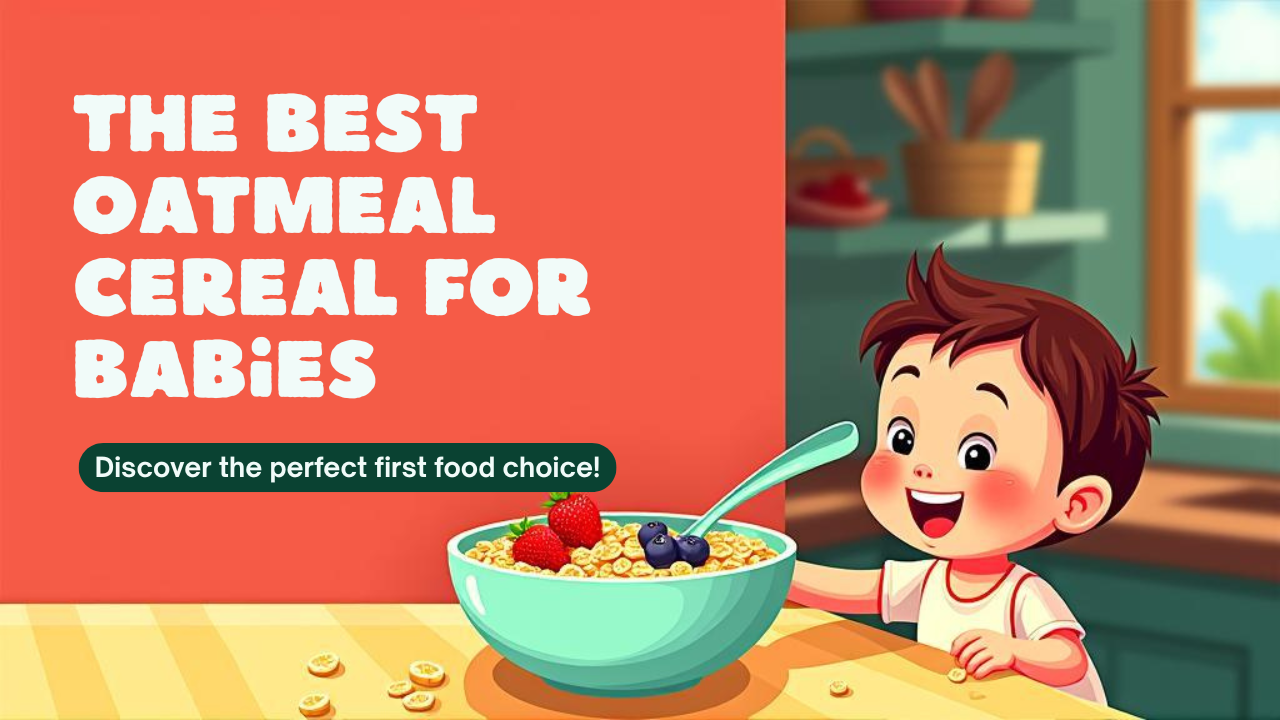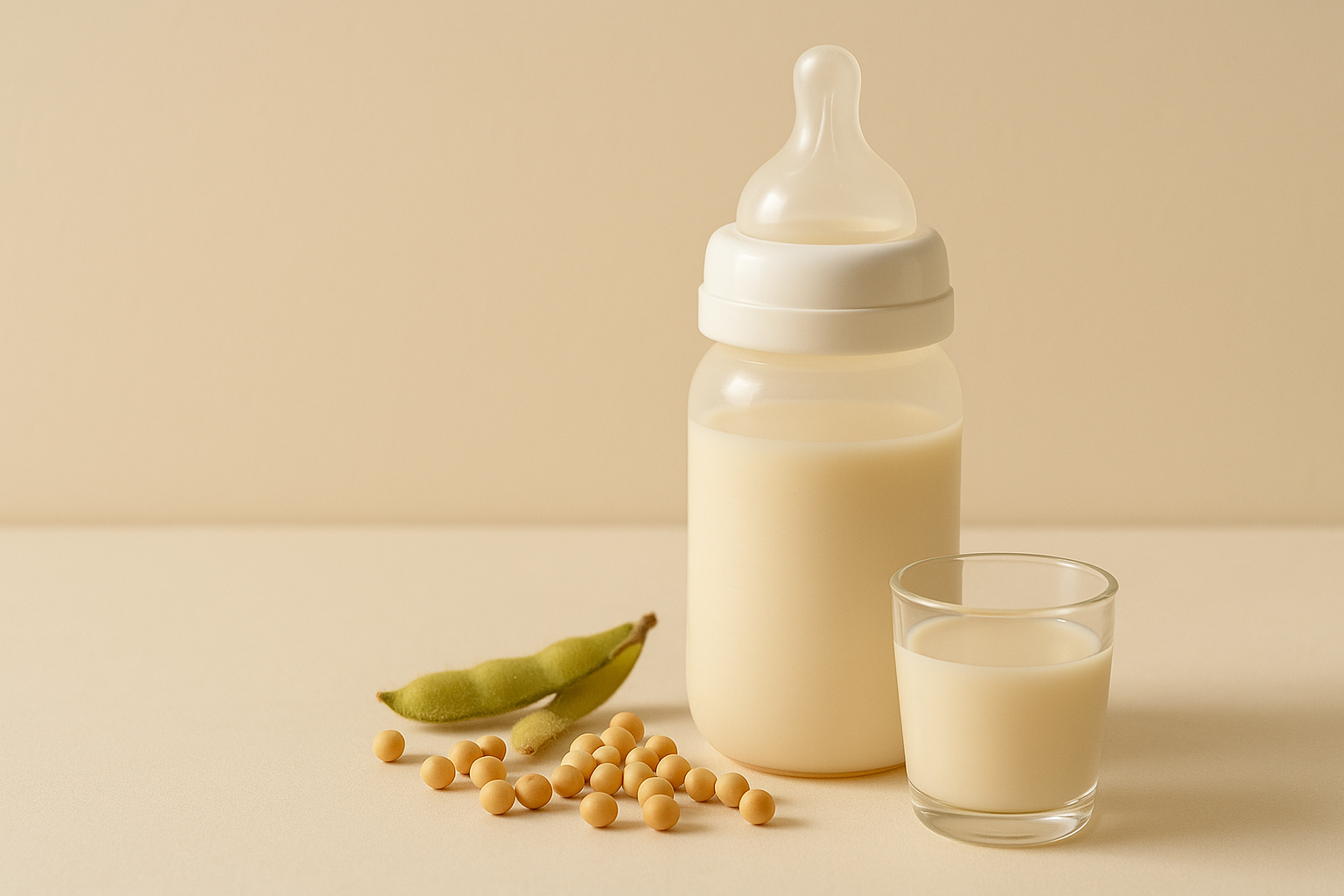6 Month Old Feeding Guide: How Much Should They Eat?
A Complete Malaysian Parent’s Guide to Feeding Your Baby
When your baby reaches 6 months old, feeding becomes an exciting new journey. This is the stage when most babies are ready to start exploring solid foods while still getting their main nutrition from breast milk or formula. At this age, the beginning of introducing solids marks an important milestone in your baby's development. In fact, many babies are showing signs of readiness and are eager to start eating and sleeping more independently at this stage.
If you’re a parent , you might be wondering:
- How much solids should a 6-month-old eat?
- How many milk feeds are enough?
- What’s the best feeding schedule for my baby?
Understanding Your Baby’s Nutritional Needs at 6 Months old
At this age, milk (breast milk or infant formula) remains your baby’s main source of nutrition. Solid foods are introduced gradually to help your baby explore new textures, flavors, and nutrients. Infants at this stage are beginning the transition from a milk-only diet to incorporating small amounts of solids as part of their feeding routine.
According to the American Academy of Pediatrics (AAP) guidelines:
- Breast milk or formula should still make up most of your baby’s daily calories.
- The purpose of starting solid food is to introduce solids mainly for learning and experience, not for replacing milk entirely.
- This is the perfect time to introduce iron-rich foods, as your baby’s natural iron stores start to decline.
How Much Solids Should a 6-Month-Old Eat?
When starting solids, think “small amounts, often”. Begin by offering a small amount to help your baby get used to new tastes and textures.
💡 Good Rule: Begin with 1-2 tablespoons of pureed food once a day, and slowly and steadily increase to 2-3 small meals over the next few months.
Start with one meal per day and watch your baby's cues before gradually adding more meals.
Example first meals:
- Mashed sweet potato
- Rice porridge (bubur nasi) with blended vegetables
- Pureed banana or papaya
- Iron-fortified baby cereal mixed with breast milk/formula
Babies may eat different amounts at each meal depending on their appetite and stage of development.
Feeding routines can progress week by week as your baby grows and becomes more comfortable with solids.
How Much Milk Should a 6-Month-Old Drink Per Feeding?
Most babies at this stage:
- Breastfeed: 4–6 times in 24 hours
- Formula-fed: 180–240 ml per feed, 4–5 times a day
At 6 months, typical milk intake is about 700–1000 ml per day, which supports healthy growth as your baby starts to explore solid foods.
Remember, some babies drink more in the morning and less in the evening, or vice versa — that’s normal as long as they’re gaining weight and showing fullness cues.
Baby Feeding Schedules
Here’s a sample feeding schedule for a 6-month-old, including how to offer solids as part of your baby's daily routine:
Morning
- 7:00 am – Milk feeding (breast or formula)
- 9:00 am – Breakfast solids (iron-fortified cereal with fruit puree)
Midday
- 11:30 am – Milk feeding
- 1:00 pm – Lunch solids (vegetable puree with soft protein like mashed lentils)
Afternoon
- 3:30 pm – Milk feeding
- 5:30 pm – Dinner solids (mashed pumpkin with rice porridge)
Evening/Night
- 7:30 pm – Milk feeding before bed
- Night feedings if baby wakes hungry
Note: Always feed your baby according to their hunger cues and adjust the schedule as needed.
7 Tips for Feeding Your 6-Month-Old Baby
- Follow your baby’s hunger and fullness cues – Don’t force-feed. Establishing a consistent baby's feeding routine helps your baby know what to expect and supports healthy eating habits.
- Start with single-ingredient foods – This helps you monitor allergies. Always wait a few days before introducing another new food to watch for any reactions.
- Introduce iron-rich foods early – Eggs, lentils, pureed chicken, fish.
- Offer water in an open cup during meals – Just a few sips to learn drinking skills.
- Be patient – Some babies take time to accept new flavors. As babies eat more solids, they gradually learn to handle different textures and tastes.
- Avoid salt and sugar – Baby’s kidneys are still developing.
- Make mealtimes fun – Sit together as a family so your baby can learn by watching you eat.
Introducing Solid Foods in Malaysia
Malaysian kitchens have a variety of baby-friendly options:
- Vegetables: Carrot, pumpkin, spinach, broccoli
- Fruits: Banana, papaya, mango, dragon fruit
- Proteins: Fish (boneless), chicken, tofu, egg yolk
- Carbs: Rice, sweet potato, corn
You can steam, mash, or blend these foods. For baby-led weaning, offer soft-cooked sticks of vegetables or fruit that baby can grasp.
Baby Feeding Chart for 6 Months
Meal
Food Type
Amount
Notes
Breakfast
Iron-fortified cereal + fruit puree
1–2 tbsp
Offer as a solid meal; mix with breast milk or formula
Lunch
Vegetable puree + protein
1–2 tbsp
Solid meal with soft and smooth texture
Dinner
Carbs + veggie mix
1–2 tbsp
Introduce new flavors gradually during this solid meal
Milk Feeds
Breast/formula
4–6 feeds/day
Remains main source of nutrition
Protein Foods for Babies
Protein is important for growth:
- Mashed fish (ikan)
- Blended chicken breast
- Tofu or tempeh mash
- Lentil puree
- Cheese (a good source of protein, calcium, and vitamin D)
Always remove bones, skins, and seeds.
Bottle Feeding vs Breastfeeding at 6 Months
Breast milk: Provides antibodies, perfect balance of nutrients. Many parents choose to nurse their infants frequently to ensure they receive age-appropriate nutrition and support healthy development.
Formula: Good alternative if breastfeeding isn’t possible or is supplemented.
Whichever you choose, make sure feeds are on demand and baby is satisfied.
Milk Supply & Solids
If you’re breastfeeding, starting solids shouldn’t reduce your supply — keep offering milk before solids in the early months of weaning.
Nursing continues to be an important source of nutrition for your baby even as you introduce solid foods.
Signs Your Baby is Ready for Solids
- Can sit up with little support
- Shows interest in food
- Can move food from spoon to throat
- Doubled birth weight
Foods to Avoid at 6 Months
- Cow’s milk as a drink (until 1 year). After your child’s first birthday, cow's milk should be served in a cup, not a bottle, and intake should be limited to avoid displacing other important nutrients.
- Honey (risk of botulism)
- Whole nuts (choking hazard)
- Foods with added salt or sugar
Baby-Led Weaning vs Spoon Feeding
Spoon feeding: Purees, easy to track intake
Baby-led weaning: Encourages independence, offers soft finger foods
You can combine both methods.
Gaining Weight & Monitoring Growth
Use your baby’s growth chart during paediatrician visits to ensure healthy progress. If your baby isn’t gaining weight well, consult your doctor for a tailored feeding plan.
Sample Feeding Schedules by Age
1- to 3-Month-Old Feeding Schedule
- Milk feeds every 2–4 hours
- No solids yet
4- to 6-Month-Old Feeding Schedule
- Milk feeds every 3–4 hours
- Begin solids around 6 months
6-Month-Old Feeding Guide
- 2–3 solid meals/day
- 4–6 milk feeds/day
As your baby grows, you can gradually transition to three solid meals per day, aiming for a structured routine of three meals alongside milk feeds. Approaching their first birthday, start introducing table food to help your child adapt to family meals and develop healthy eating habits.
Introducing Cups & Self-Feeding
At this stage, you can introduce:
- Open cup – Helps with coordination
- Straw cup – Fun and encourages sipping
As your baby practices self-feeding, you can also offer a healthy snack to support their nutrition and eating habits.
Fullness Cues to Watch For
- Turning head away
- Closing mouth tightly
- Playing with food instead of eating
- Slowing down chewing/swallowing
Nutrition for the First Year
Milk remains the primary source of nutrition until your baby’s first birthday. In fact, a baby's main source of nutrition during the first year should be breast milk or infant formula, which provides essential nutrients for healthy growth. Solids are important for developing taste preferences, chewing skills, and meeting extra nutrient needs like iron and zinc. Paying attention to your baby's nutrition during this stage supports proper development.
As your baby approaches their first birthday and transitions to toddlerhood, it's important to gradually introduce a variety of foods to help children develop healthy eating habits.
Disclaimer:This article provides general information for parents and is not a substitute for professional medical advice. Always consult your paediatrician or a qualified healthcare provider regarding your baby’s specific needs, growth, and health.
19. Food Allergies: What Parents Need to Know
Introducing solid foods is an exciting milestone, but it’s natural for parents to worry about food allergies. When you begin offering new foods, watch closely for signs of an allergic reaction, such as a rash, itching, swelling, stomach cramps, diarrhea, or vomiting. If you notice any of these symptoms, stop feeding the suspected food and consult your pediatrician right away.
To help identify food allergies, introduce potential allergens—like peanuts, eggs, or dairy—one at a time and in small amounts. This makes it easier to pinpoint which food may be causing a reaction. Remember, breast milk or formula should remain your baby’s main source of nutrition as you start introducing solid foods. Using a baby feeding chart is a helpful way to keep track of which foods your baby has tried and to note any reactions. This careful approach ensures your baby’s nutrition is balanced and safe as they explore new foods.
Safety Precautions When Feeding Your 6-Month-Old
Keeping your baby safe during mealtimes is just as important as what you feed them. Always supervise your baby while they’re eating solid foods, and never leave them alone with food or drinks. Cut foods into small, soft pieces to reduce the risk of choking, and avoid serving hot foods or drinks that could burn your baby’s mouth.
If you’re bottle feeding, make sure the bottle nipple is the right size for your baby’s age, and never prop the bottle in your baby’s mouth—always hold it for them. For breastfed babies, ensure a good latch to prevent discomfort or infection. Following a feeding schedule and paying attention to your baby’s fullness cues can help you plan safe and enjoyable meals and snacks. Every baby is different, so adjust your approach as needed to keep feeding times safe and stress-free.
Common Feeding Challenges and How to Overcome Them
It’s common for parents to face a few bumps when introducing solid foods. Some babies may refuse to eat certain foods or struggle with new textures. If your baby isn’t interested in solids, try offering a variety of flavors and textures, and don’t force them to eat—sometimes it just takes a few tries for babies to accept something new.
For babies who have trouble with lumps or thicker foods, start with smooth purees and slowly work up to more textured options. If you’re concerned about your baby’s weight gain or notice signs of dehydration, reach out to your pediatrician for advice. Keeping a baby feeding chart can help you track what your baby eats and spot any patterns or issues early on. Remember, every baby is unique—be patient, flexible, and celebrate small successes as your baby learns to enjoy solid foods.
When to Consult a Professional About Feeding Concerns
If you have any concerns about your baby’s feeding, nutrition, or how to introduce solid foods, don’t hesitate to seek professional advice. Your pediatrician can provide guidance on feeding schedules, managing food allergies, and overcoming feeding challenges. They can also help you create a personalized baby feeding schedule that fits your baby’s needs.
For breastfeeding support, a lactation consultant can offer practical tips and encouragement, while a registered dietitian can help with nutrition and meal planning. If you’re ever unsure about your baby’s feeding or nutrition, it’s always best to ask for help—your baby’s health and well-being are worth it.
(Disclaimer: This article is for informational purposes only. Always consult a pediatrician or healthcare provider before introducing new foods or formulas to your baby’s diet.)
%201.svg)












